Prince of Speed (part 2)
"World-Beater" project
Since 1965 the main British motorcycle manufacturers had already together tried to build a new 500 cc road racer, but for years all attempts to achieve a result failed. In 1969, however, there were concrete plans. Weslake had developed a relatively simple parallel twin mounted in a Rickman Métisse frame, producing about 69 horsepower and extensively tested by Phil Read.
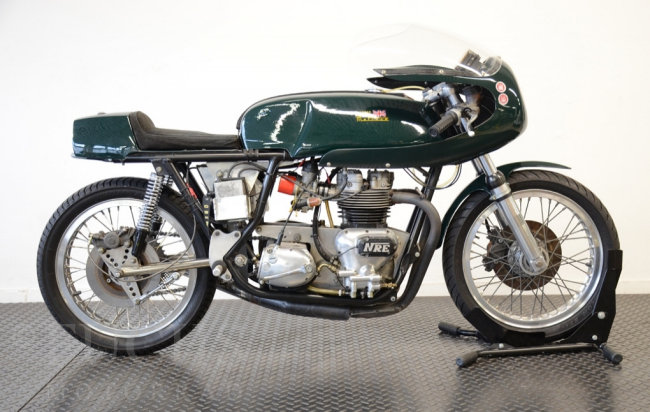
Meanwhile, the company Reads of Leytonstone was also involved in the project. In January they already had a standing twin with double overhead camshafts that had previously been exhibited at the Münch stand at the IFMA.
Phil Read took over the shares of Reads of Leytonstone. The intention was that the machine would be sold as a production racer, but that sidecar drivers would also be able to buy separate engine blocks. An exception was also made for Tom Arter and Peter Williams who had long been planning to mount a Weslake block in a Reynolds frame. Read was a test driver and consultant based at the Weslake factory in Rye. He decided to adopt the Reynolds frame built by Ken Sprayson. He took over the lead of the project from Peter Williams so that Peter could work on his own project to replace the aging Matchless G50. The machine was presented at the end of January. However, it was not a "World-Beater".
The machine had to cost approximately 12,000 guilders (5500 euro). Phil Read started with it in the North West 200 in Northern Ireland, but had to retire after just one lap because the oil pressure dropped when he accelerated. In August, the only news was that the machine was "not yet race-ready". In October, Phil Read retired from the project.
Also in 1970, Phil Read participated only sporadically in the World Cup series. He started at Assen in the 250 and 350 cc classes, finishing second and third and finished third in the 250 cc race at Monza. He was supported by the Dutch mechanic Ferry Brouwer, who later became the importer of Arai helmets in Europe and the man behind the Centennial TT.
In 1971 Phil Read raced almost a full season in the 250 cc class. Yamaha had again built semi-factory racers. These Yamaha YZ 632s were made available to Kent Andersson and Rodney Gould, but Read won three consecutive GPs on his Yamaha TD 2 B, which was tuned by Ferry Brouwer, but whose frame was developed by Read himself. The machine was very fast and reliable, but in Czechoslovakia Phil Read broke a shoulder blade and a collarbone, making it look like the world title would no longer be possible.
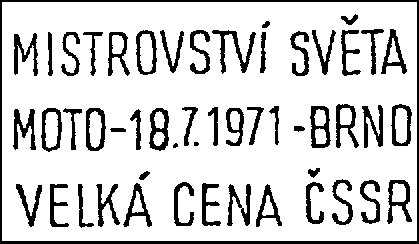
Two GPs later, however, he was already back, although he only managed to finish tenth in Finland. It was now between Gould and Read, who were only a few points apart and were actually both starting to get less good results. When Read dropped out in Ulster, Gould was only sixth, resulting in a lead with one point over Read. In the end, Gould only had to finish fourth in Spain to grab the world title, but he dropped out. Now Phil Read had enough for fourth place, but he even became second and thus world champion. He hoped for factory support from Yamaha in 1972, but one of the top men in Japan stated: "Even if Phil Read would be the only rider in the world, we wouldn't take him back".
Phil Read started only a few times in the 350 cc class, but mostly retired. In Monza he received the new Ducati 500 GP from Ducati, together with Bruno Spaggiari. Spaggiari dropped out, Read finished fourth. He was involved in the creation of the Grand Prix Riders Association, an association of drivers that tried to improve conditions for the drivers during competitions.
Phil Read, along with Dave Simmonds, Frank Perris, Reg Thomas and David Dixon, was part of a provisional committee that would meet at each Grand Prix and determine starting fees in categories according to a driver's performance.
In 1972 Phil Read started for the new John Player Norton team in a number of 750 cc races, such as the Daytona 200, the Mallory Park Race of the Year and a Formula 750 race at Anderstorp.

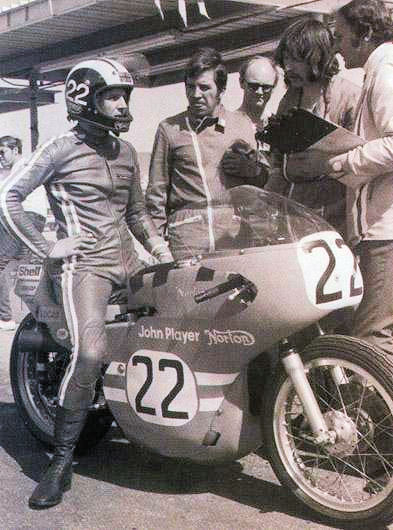
Phil Read on the John Player Norton in Daytona
He had bought a Suzuki T 500 thus probably wanted to compete in the 500 cc class, but when Jarno Saarinen became a threat to Giacomo Agostini's chances with his Yamaha YZ 634, he was hired by MV Agusta to support Agostini in the 350 cc class. However, he continued to compete in the 250 cc class on the Yamaha TD 3, winning the French GP and the 250 cc Lightweight TT. In the 250 cc world championship he ended fourth. From the GP des Nations on he got the three-cylinder MV Agusta 350 3C at his disposal. Agostini had access to the new four-cylinder MV Agusta 350 4C, but often had more confidence in the three-cylinder. When Read also got a four-cylinder in the GDR, he won the race after Agostini had dropped out. He finished the season in the 350 cc class in fifth place, Agostini became world champion.
After 125 cc World Championship leader Gilberto Parlotti died in a crash during the 125 cc Lightweight TT, Phil Read was one of the drivers who felt the Isle of Man TT should be dropped from the World Championship calendar.
In 1973 Norton's 750 cc team was downsized and Read was able to accept an offer from MV Agusta for a proper Grand Prix contract. It was suspected that he should act as second driver behind Agostini, but Phil Read certainly saw it differently. Due to the poor reliability of the 350 cc MV Agustas, they seldom both crossed the finish line, but in Assen Agostini won by just 0.1 seconds ahead of Read. In Finland, Phil Read once again helped Agostini by keeping Teuvo Länsivuori in third place. With that, Länsivuori lost his last chance of the world title, which went to Agostini.
For the 500 cc class, MV Agusta had increased the 350 4C to 430 cc, but Agostini did not trust the machine and rode almost the entire season with the old 500 cc three-cylinder. Phil Read almost always used the 430 cc four-cylinder.
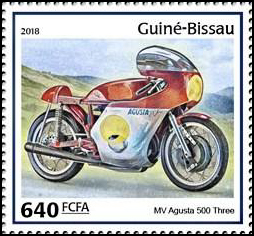

Phil Reads MV 500 4C at a classic race event
However, the first two races were won by Jarno Saarinen on the new four-cylinder two-stroke Yamaha TZ 500. Read won the German Grand Prix after Agostini and Yamaha riders Saarinen and Hideo Kanaya dropped out.
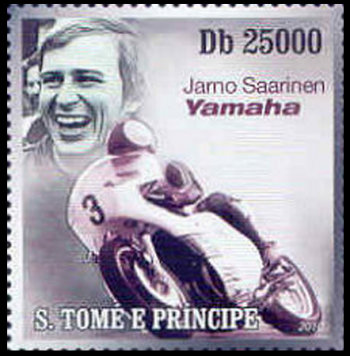
Then the serious accident in Monza followed, in which Jarno Saarinen and Renzo Pasolini lost their lives. The 500 cc race was canceled and Yamaha withdrew its team for the remainder of the season. With that, the biggest threat in the 500 cc class had disappeared. As agreed, MV Agusta did not start in the Isle of Man TT, but also not in the Grand Prix of Yugoslavia due to a questionable decision by team boss Arturo Magni. In Assen Agostini dropped out again, so that Read, who had not been able to follow him, won. Agostini did not earn his first points in the 500 cc class before Belgium, by then Phil Read had already collected 54 points. Therefore Ago's next victory in Czechoslovakia, where Read finished second, did not jeopardize Read's forthcoming world title. When he won in Anderstorp he could already call himself world champion 500 cc. He won the Spanish Grand Prix at the end of the season, albeit with difficulty because his engine seemed to lack power for a long time.
At the end of 1973, Phil Read was surprised by Giacomo Agostini's statement in the press that he (Ago) should be the first driver at MV Agusta. Read thought Agostini's words were twisted, but when they were repeated in a second interview, the tension between the two teammates was palpable. It was decided that the "Race of the South" at Brands Hatch would decide which of them was the best. The race was won by Read, while Agostini was even overtaken by Wil Hartog.
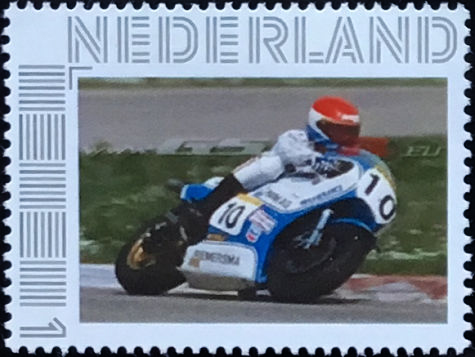
At the end of 1973 Agostini left to Yamaha, one of the reasons being that he would also be allowed to ride in the Daytona 200.

Read got a good contract with MV Agusta but insisted on hiring Dieter Braun as second driver. That didn't fit the plans of MV Agusta, which also needed someone for the Italian championship and that's why it became Gianfranco Bonera. In the 350 cc class, MV Agusta quickly disappeared from the scene. After dropping out in France and Austria, the team did not start again from the home race in Imola onwards. In the 500 cc class, Bonera and Read again started with the 430 cc four-cylinder. Agostini broke a collarbone in Sweden, leaving him without a chance for the title. Read won in France, but only finished third in Imola and Assen.
In Belgium, the full-fledged 500 cc MV Agusta was ready and things went better from that moment on. Phil Read won there, just like in Finland and Czechoslovakia, and became world champion. Bonera finished the season in second place.
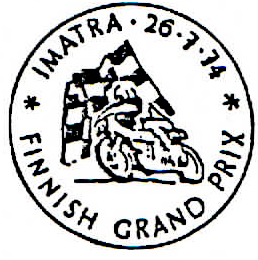
Already after a few races in 1975 it became clear that the contract with Phil Read would not be extended by MV Agusta in 1976. Read was very dissatisfied with his machines and the atmosphere in the team was very bad. On the other hand, Giacomo Agostini sought rapprochement with the team again.
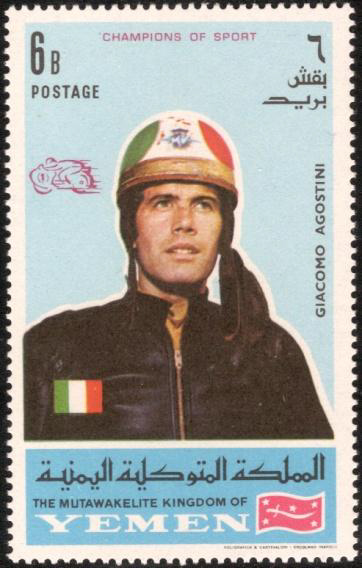
The MV Agusta could also no longer compete against the fast Yamahas of Agostini and Teuvo Länsivuori, with the exception of high speed circuits such as Hockenheim and Spa-Francorchamps. Still, he had a good second half of the season, also because Agostini started to perform less well. Read won in Belgium and became second in Sweden, where Agostini dropped out. Read also won in Czechoslovakia, but Agostini's second place was enough to become world champion. Phil Read ended the season in second place.
At the beginning of 1976 Read suggested Count Corrado Agusta to set up a private team with MV Agusta engines. So did Agusta, but not with Phil Read. He made the machines available to Giacomo Agostini and his "Marlboro-Api Racing Team". Therefore Phil Read bought himself a private bike: a Suzuki RG 500, but a few weeks later he was included in the "Life Racing Team" (led by Alberto Pagani) with production bikes from the Italian Suzuki importer SAIAD.
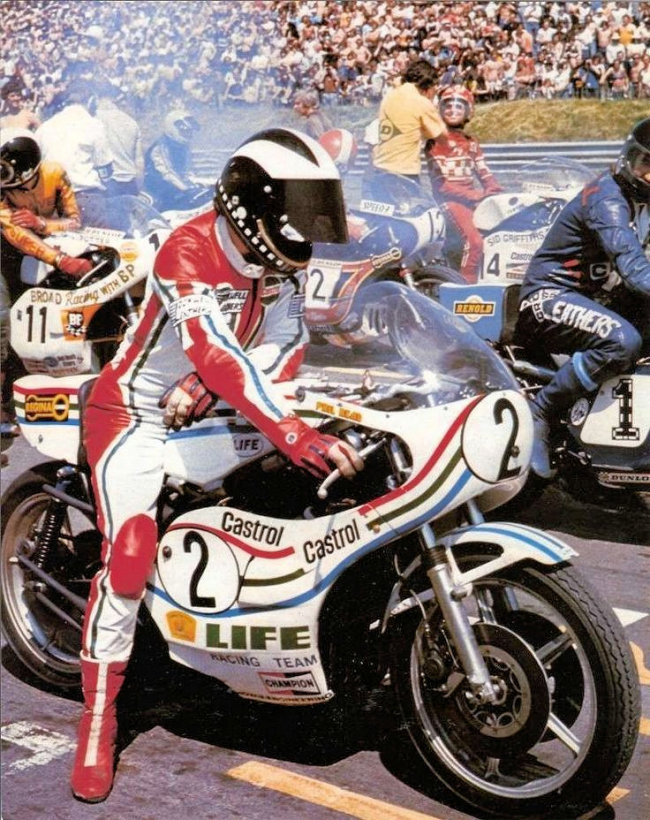
Phil Read on the Team Life Suzuki
He joined the "McCormack group", led by the American Mark McCormack. That group demanded high starting fees from the organizers according to the "one for all, all for one" principle. If one of the eleven affiliated drivers was not contracted, none of them would come. The idea was doomed to fail: the drivers could not afford to refuse a start if unaffiliated drivers posed a threat to them for the world championship. The organization of the Assen TT was the first to be confronted, but simply refused to speak to representative Ian Todd. By then the group had already shrunk to six drivers.
Read was third in Austria and second in Italy, but his GP career came to an abrupt end in Belgium. While he was sitting at the hotel bar in his swimming trunks, his manager Alberto Pagani reported that he was ill. In any case, he'd had a conversation with his wife Madeleine and that was stated as the reason he didn't start. However, his mechanics did not know that. They were waiting for Phil a few minutes before the start, while he was already at home in Oxshott. On Sunday, Pagani stated that Phil would no longer be racing outside of England to focus more on his family (two of his four sons had adaptation problems at school) and two businesses: Irish helmet factory Premier and clothing and boot factory Phil Read International. He had to ride without his Suzukis, because sponsor Life immediately claimed them back and gave them to Teuvo Länsivuori. Nevertheless, Life International continued to support Read financially. On October 13, 1976, he retired from the sport at the Gauloises Powerbike races at Brands Hatch. He set a new lap record, but also fell, breaking a collarbone. Almost immediately it became known that he had imagined his retirement differently, and that he was already making racing plans for 1977.
Although he was already for years against racing on the Isle of Man, he participated again in the 1977 TT.
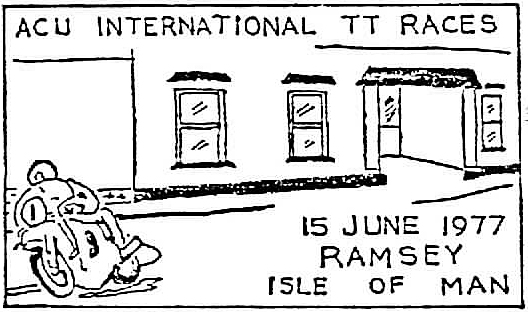
It was not because he liked it: Read needed the money because he was in divorce, and the organization offered him five times the starting money he had received in 1972. The reception was very cool: Marshalls wanted to strike and he was told to park his Rolls-Royce behind the hotel, to avoid that the car would get damaged. The applause after his first victory (the Senior TT on a Suzuki) was also meagre, but when he won the Formula TT with a Honda CB 750, the audience became more enthusiastic.
In 1978 Mike Hailwood returned to the Isle of Man after eleven years. Hailwood rode a Ducati that was regarded to have no chance, Read rode his Honda Britain CB 750.
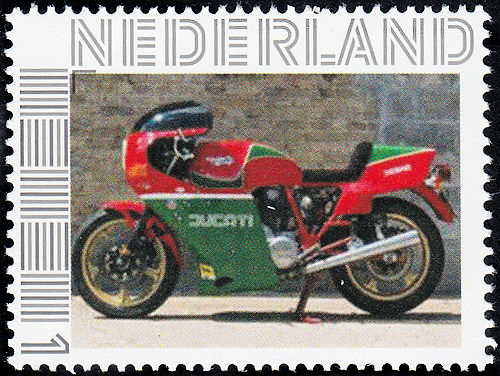
The fight only lasted 3½ rounds. Then Read dropped out due to a major oil leak. Hailwood was already leading and clearly had the crowd on his side, but Phil Read remembered this short race as one of the best of his career. In his own words, that was also because he really admired Mike Hailwood - as a driver and as a person.
Phil Read became a dealer of the Honda brand in Hersham in the years after 1978, among other things. In 1982 he took again part in a number of races at Man: the Senior TT (fourth), the Classic TT (withdrawn) and the Formula One TT (withdrawn). In 1998 he was sixteenth in the Manx Grand Prix Classic Senior Race.
In the 1990s, Phil Read worked as a project funder and golf course designer. In 2003 he bought an ABSAF (Appingerdammer BSA Factory) to participate in the newly established World Classic Series. From 2010 on, Phil Read was often seen at classic races, where he, like Jim Redman, sold his own merchandise.
He was diagnosed with COPD in 2021 and prostate cancer shortly after. Read died at the age of 83 in Canterbury.
I myself had the pleasure of getting to know Phil personally in 1976 and riding with him during the Arai 100 in October 2000 at the opening of the Lausitzring. Despite his contrarian character (but what top athlete doesn't have that?) he was a nice guy and a damn good driver. One of the heroes of the Continental Circus who made history.
Hans Baartman
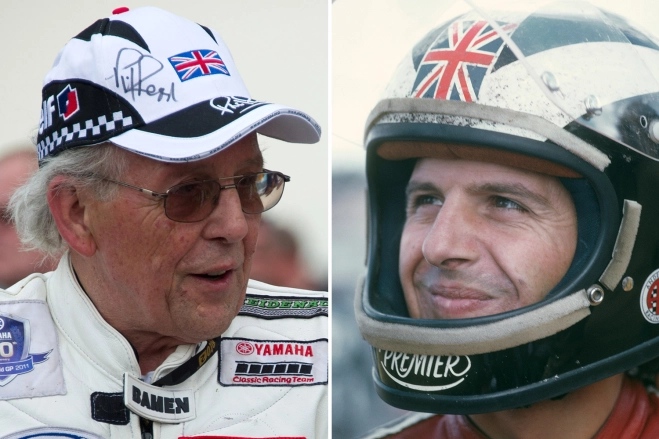
Phil Read: Winner of 8 world titles and 52 Grand Prix
★ 1-1-1939 Luton - † 6-10-2022 Canterbury
Top - Back to former page - Home |














